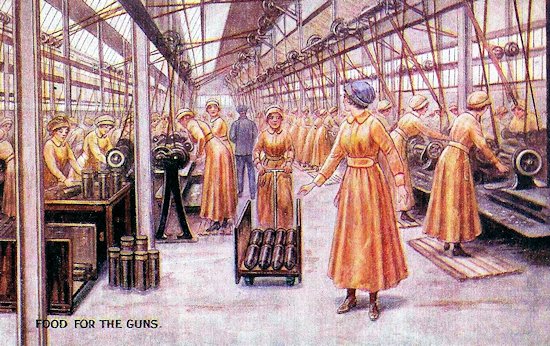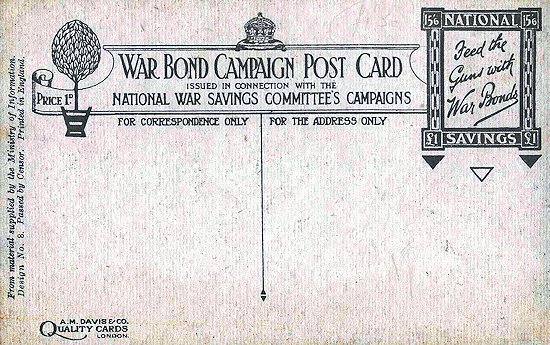 |
|
| News About Us Membership Events Links |
|

First World War Bonds and Women War WorkersWe heard in the news recently that the British Government is planning to redeem bonds issued to finance the First War. People forget that to fight a war, you need not only manpower but also money! And how was that First War money raised? Certainly not just from the banks and the wealthy. The quest for funds extended all the way down to those at the lower rungs of the socio-economic ladder. And how did they reach out to the person on the streets? You could get their attention to the need by large posters, some of which have become collector classics. You could also reach out and tell the story with postcards. The card illustrated was purchased recently at a fair in London. The front of the card carries a picture of women working in a munitions factory. As men were called to bear arms, for the first time women were drawn into the factories. It was a hard job, and no doubt much more dirty than pictured, but it drew women out of the limited range of work which had previously been available to them as domestic servants and other relatively menial jobs. The caption on the front of 'Food for the Guns', as artillery shells are being produced, sets the stage for the back. It's a War Bond Campaign Post Card and readers are reminded to "Feed the Guns with War Bonds". As a product of the National War Savings Committee, the card shows as being produced by 'A. M. Davis & Co., Quality Cards, London' "From Material Supplied by the Ministry of Information". The card appears to be one of a series, since it is described as ''Design No. 8'. So are there 7 more cards in the series? Or 9? Or ??? 
So as we progress through the coming centenaries of the various events of the First War, this card reminds us that underpinning the war effort were women in the new role as factory workers, and the entire nation putting its savings into War Bonds. By today's standards the amount of the bonds is small, but cheers to government for finally - after 100 years - paying those amounts back! And here's also to the working women whose savings helped to finance the war through those War Bonds John G. Sayers (jasayers[at]saybuck.com)
|
|
|
Home | News | About Us | Membership | Events | Links | Contact | Item of the month | Articles |
| Copyright © The Ephemera Society 2025. All Rights Reserved. |